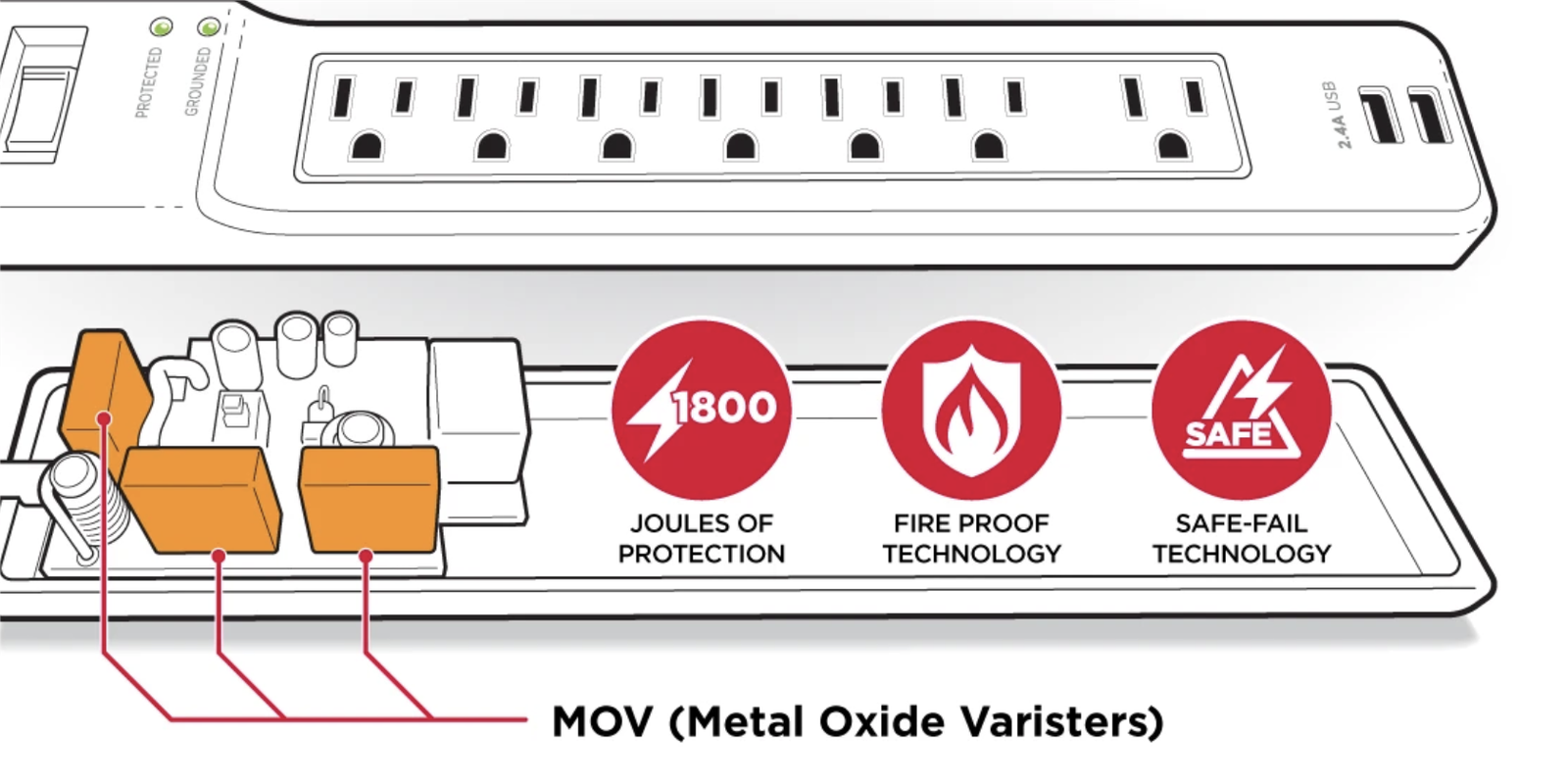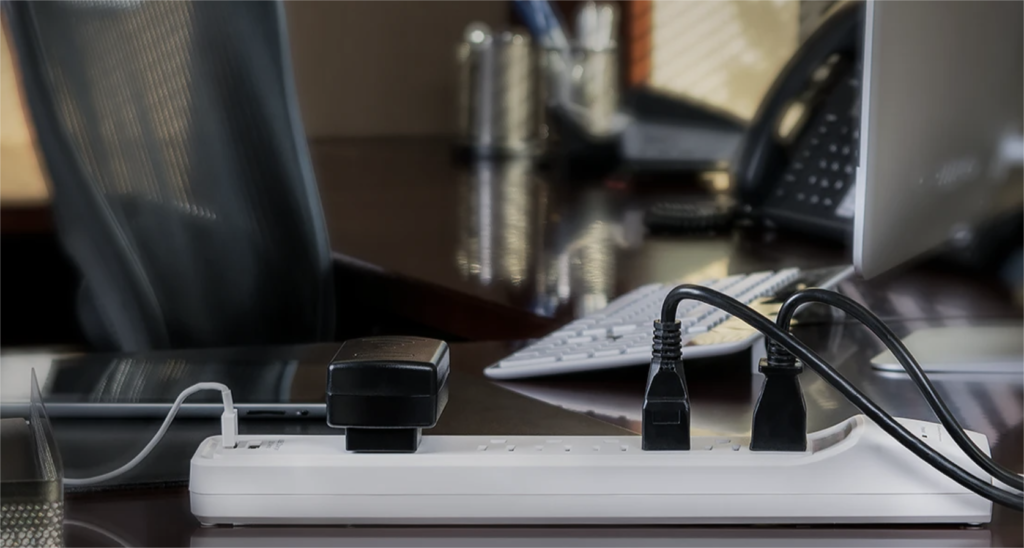How Much Surge Protection Do I Need?

Choosing the right surge protection depends on your devices, local power conditions, and how often you face electrical spikes. A higher joule rating offers more robust defense, but there’s no one-size-fits-all number. Tailoring protection to your setup keeps crucial electronics safe from sudden damage and extends their lifespan.
Surge protectors vary widely in joule ratings—from a few hundred joules for basic home use to thousands for heavier gear. Every surge your protector absorbs reduces its capacity, so a higher initial rating generally lasts longer. For typical home offices or entertainment centers, 1,000–2,000 joules is a good start, but bigger home theaters, gaming rigs, or multiple devices might benefit from 2,000+ joules. It’s all about matching your specific environment and budget to guard your electronics effectively.
Let’s explore why surge protection matters, how to gauge the right rating, whether you need whole-house coverage, and signs it’s time for a replacement.
What Makes Surge Protection So Important?
Voltage spikes can strike without warning—during thunderstorms, grid fluctuations, or even routine appliance usage. Surge protectors prevent these surges from reaching your sensitive gear.
A single power surge can fry circuit boards, ruin hard drives, or corrupt data. Surge protection adds a protective buffer, absorbing or redirecting harmful excess voltage. Even small, repetitive surges degrade electronics over time, causing intermittent issues and short lifespans. By investing in a quality surge protector, you safeguard expensive systems—like computers, TVs, and home automation equipment—against both catastrophic and gradual surge damage.

Power surges come in many forms, from dramatic lightning strikes to micro-spikes triggered by everyday activities (like your air conditioner cycling on). While a big surge can obviously zap your devices, smaller ones can also chip away at their internal components. Over time, this repeated stress leads to unexplained breakdowns or errors. Surge protectors incorporate MOVs (Metal Oxide Varistors) or similar technology that clamp or redirect these spikes before they harm your electronics.
Surges Beyond Bad Weather
Storms are notorious surge causes, but utility switching and local grid issues can also create unpredictable voltage spikes1. Even turning on a large appliance, like a vacuum or space heater, can cause minor surges. If your environment regularly faces these fluctuations, reliable surge protection becomes invaluable.
Peace of Mind
Think of the cost of replacing or repairing a high-end TV or gaming PC. Surge protection is a small price to protect far bigger investments. Plus, many surge protectors include extra features—such as line noise filtering or USB charging ports—that enhance convenience.
Layered Defense
Some people even add multiple layers—like a whole-house surge protector2 at the breaker panel plus plug-in protectors for critical gear. This layered approach offers robust shielding, ensuring no single spike slips through. Regardless of how basic or advanced your strategy is, surge protection is essential for modern homes packed with delicate circuit boards.
How Do I Determine the Right Joule Rating?
Your joule rating choice depends on how many devices you plan to protect, the value of those devices, and how often you face electrical surges.
Think of joules as the energy your protector can absorb before wearing out. A higher joule rating means it can handle bigger or more frequent spikes. For small setups—like a basic computer and monitor—1,000–2,000 joules is often sufficient. More complex home theaters or large gaming rigs might aim for 2,000–4,000 joules. Even if you rarely face major storms, the extra headroom offers lasting coverage against routine surges over time.

Joule ratings essentially quantify how much surge energy the protector can absorb in total. Once you exceed that limit—spread out over multiple smaller surges or a single big hit—its protective components are effectively “used up.”
Suggested Ranges
- Basic Office Setup (PC, monitor, printer): 1,000–2,000 joules is a good baseline.
- Mid-Range Home Theater: 2,000–3,000 joules ensures enough overhead for amplifiers, consoles, and TVs.
- High-End Gaming or Professional Workstations: 3,000+ joules for maximum longevity against repeated spikes.
Clamping Voltage & Response Time
Joules alone don’t tell the whole story. Clamping voltage (often 330–400V or lower) describes how quickly the surge protector begins diverting excess voltage. A lower clamping voltage3 means more sensitive response, reducing stress on your electronics. Response time (in nanoseconds) also matters—faster is better, minimizing how long a spike hits your gear.
Considering Local Conditions
If you live in an area with frequent thunderstorms or an older, unstable power grid, aim on the higher side. Meanwhile, if surges are rare, a modest rating might suffice. But keep in mind: more joules typically means more peace of mind—and you won’t have to replace the unit as quickly.
Overall, matching your gear’s total value and vulnerability to a robust surge protector rating4 is wise. If in doubt, a bit more capacity rarely hurts.
Should I Get a Whole-House Surge Protector?
A whole-house surge protector sits at your main electrical panel, shielding all circuits at once. But is it necessary?
Whole-house protectors intercept surges before they enter individual outlets, offering a broader safety net. Lightning strikes and utility grid fluctuations are largely handled at the panel, reducing the surge burden on your devices. However, it doesn’t eliminate the need for localized protection—like power strips with surge features—especially if you have highly sensitive or expensive electronics. Many experts recommend a layered approach: a whole-house protector plus local surge protectors for critical gear.

Installing a whole-house surge protector requires an electrician to wire it into your home’s main service panel. This device clamps big surges—like lightning events or major utility transients—before they travel to your outlets. By the time electricity reaches your devices, the surge has been dramatically reduced or eliminated.
Benefits
- Comprehensive Coverage: All circuits, from kitchen appliances to HVAC systems, get some level of protection.
- Reduced Load on Local Protectors: Plug-in surge protectors face fewer or smaller spikes, prolonging their life.
- Peace of Mind: If you live in storm-prone areas or have frequent electrical issues, it’s a valuable investment.
Limitations
Even with a whole-house protector, smaller surges within the home (from appliances switching on/off) or those that enter through other lines (like cable or Ethernet) can still threaten sensitive gear. That’s why dedicated surge protectors5 for computers, TVs, and networking hardware remain beneficial. Additionally, a whole-house solution won’t necessarily protect connected lines like phone or coax unless it specifically includes those modules.
Cost & Professional Installation
Whole-house surge protectors typically run a few hundred dollars plus installation. While it’s more expensive upfront, the coverage is extensive. If you own your property, it might be well worth it—especially if you store irreplaceable data or rely on high-end electronics. Renters might find it less feasible to implement, focusing instead on top-tier local surge protectors.
When Is It Time to Replace My Surge Protector?
Surge protectors degrade over time. Each surge absorbed reduces their capacity, so they won’t last forever—even if they keep powering your devices.
Check your device’s indicator lights—if the “protected” LED goes out, your unit may still function as a power strip but no longer safeguards against surges. Notice any burns, melted plastic, or frequent breaker trips? That’s a red flag, too. Some experts suggest replacing protectors every three to five years, especially in storm-heavy regions, to ensure reliability. Also, a major surge event might use up the internal MOVs instantly, so keep an eye on performance afterward.

Surge protectors typically rely on components called Metal Oxide Varistors (MOVs), which absorb and dissipate excess voltage. Each time they clamp down on a spike—whether minor or major—the MOVs degrade slightly. Over months or years, repeated surges deplete their capacity. That’s why a protector that’s survived numerous storms might quietly lose effectiveness, even if it still powers your devices.
Signs of Wear
- Flickering or Extinguished “Protection” Light: Many models have an LED that indicates if the MOVs remain functional. Once it’s off, you’ve lost surge protection.
- Physical Damage: If you see scorch marks near outlets or detect a burnt smell, the protector may be damaged internally.
- Unusual Heating: A warm unit might be normal under load, but excessive heat suggests stress or short-circuit risk.
Post-Surge Assessment
After a big surge—like a nearby lightning strike—always inspect your protector. If your region is prone to frequent storms or power grid fluctuations6, plan on shorter replacement intervals7.
Lifespan Guidelines
A decent surge protector can last several years under normal conditions. But if you suspect it’s taken repeated hits or you see any warning signs, swap it out early. The cost of a new surge protector8 is minor compared to repairing or replacing expensive electronics. Keeping a watchful eye and rotating older units ensures you’re continually protected from the unexpected.
Conclusion
Whether you need just a local surge protector or a whole-house solution, matching joule ratings to your devices’ worth and surge risks is vital. Regularly check “protected” LEDs, replace aging protectors, and consider layering your defense for ultimate peace of mind in a world of power unpredictability.
-
Understanding the causes of voltage spikes can help you better protect your home appliances and electronics from potential damage. ↩
-
A whole-house surge protector offers comprehensive protection against voltage spikes, safeguarding all your home’s electronics at once. ↩
-
Understanding clamping voltage helps you choose a surge protector that effectively safeguards your electronics from voltage spikes. ↩
-
Learning about surge protector ratings ensures you select a device that matches your electronics’ value and vulnerability, offering optimal protection. ↩
-
Learn why dedicated surge protectors are crucial for protecting sensitive electronics like computers and TVs from internal surges. ↩
-
Learn how power grid fluctuations can impact your electronics and the importance of surge protection. ↩
-
Discover the optimal replacement intervals for surge protectors to ensure continuous protection for your devices. ↩
-
Understanding the lifespan and replacement intervals of surge protectors can save your electronics from unexpected damage. ↩







